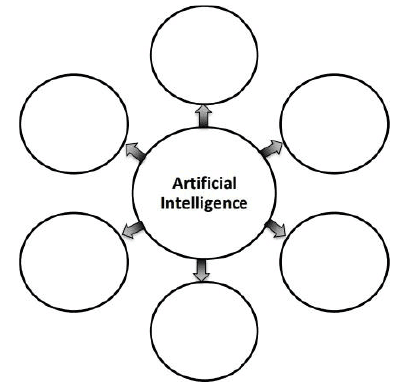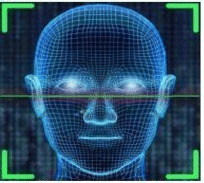AI Reflection and Ethics Chapter Notes | Artificial Intelligence (AI) for Class 9 PDF Download
| Table of contents |

|
| Introduction to AI |

|
| Some Applications of AI |

|
| Fraud and Risk Detection |

|
| Medical Imaging |

|
| Group Activity: Reflect and Analyze |

|
| Let’s Understand: The Strands of AI |

|
Introduction to AI
In simple terms, Artificial Intelligence (AI) refers to the ability of a machine to perform tasks that typically require human intelligence. This includes tasks like making decisions, predicting outcomes, learning from experience, and improving over time.
- AI is not just a technology; it's also a field of study focused on creating systems that can think and learn like humans.
- The goal of AI is to develop computer systems, both hardware and software, that can carry out tasks usually needing human intellect, such as understanding language, recognizing patterns, and solving problems.
- AI has a wide range of applications and is expected to influence every sector in the future. At its core, AI aims to build machines and algorithms capable of performing complex tasks that would normally require human brainpower.
How to make machine intelligent?

Different Domains of AI:
1. Computer Vision:
- In this domain, artificial intelligence works with videos and images, allowing machines to interpret and understand visual information.
- Computer vision enables applications such as facial recognition, object detection, and image classification.
2. Natural Language Processing (NLP):
- NLP focuses on textual data and enables machines to comprehend, generate, and manipulate human language.
- This domain is crucial for applications like language translation, sentiment analysis, and chatbots.
3. Statistical Data:
- Statistical data involves using statistical techniques to analyze, interpret, and draw insights from numerical or tabular data.
- This domain helps in making data-driven decisions and identifying trends within large datasets.

Some Applications of AI
- Face Lock in Smartphones: Modern smartphones offer a face lock feature that allows users to unlock their devices using facial recognition. During the initial setup, the front camera captures and stores the unique features of the user's face. Subsequently, when these features match, the phone unlocks, providing a secure and convenient way to access the device.
- Smart Assistants: Smart assistants, such as Apple’s Siri and Amazon’s Alexa, utilize AI to understand and respond to voice commands. These assistants recognize speech patterns, interpret the meaning behind the words, and provide relevant responses, making them useful tools for various tasks.

Fraud and Risk Detection
- Finance companies faced annual challenges with bad debts and losses. However, they possessed a wealth of data collected during the initial loan sanctioning process. To mitigate these losses, they enlisted the help of data scientists.

- Over time, banking companies learned to effectively analyze data through customer profiling, past expenditures, and other crucial variables to assess the probabilities of risk and default. This approach also enabled them to tailor banking products based on customers' purchasing power.
Medical Imaging
- For many years, computer-assisted medical imaging applications have been a reliable support for physicians. These applications not only create and analyze images but also assist doctors in interpreting them.

- The technology is utilized to read and transform 2D scan images into interactive 3D models, providing medical professionals with a detailed understanding of a patient's health condition.
Group Activity: Reflect and Analyze
The purpose is to comprehend the interconnections among the three domains of AI. Although Natural Language Processing, Computer Vision, and Data for AI are fundamentally different, they collectively form the foundation of Artificial Intelligence.
Activity: Braiding Strands
- Take three strands of different colors and try to braid them together. See how long your braid can get in 30 seconds! Are you ready? Go!
Let’s Understand: The Strands of AI
- To grasp the concept of Artificial Intelligence (AI), we can compare it to the three strands in a braid. Braid is a hairdo that is made by weaving three strands of hair together to make it look beautiful. Similarly, in AI, there are three essential strands:
- Statistical Data Strand. This strand involves the analysis and interpretation of data using statistical methods. It forms the foundation of AI by providing the necessary information for decision-making.
- Natural Language Processing (NLP) Strand. NLP focuses on the interaction between computers and humans through natural language. This strand enables machines to understand, interpret, and respond to human language in a meaningful way.
- Computer Vision Strand. Computer vision involves teaching machines to interpret and understand visual information from the world, such as images and videos. This strand allows AI to analyze and make sense of visual data.
 Together, these three strands constitute the core of Artificial Intelligence, enabling machines to perform tasks that typically require human intelligence.
Together, these three strands constitute the core of Artificial Intelligence, enabling machines to perform tasks that typically require human intelligence.
|
32 videos|57 docs
|
FAQs on AI Reflection and Ethics Chapter Notes - Artificial Intelligence (AI) for Class 9
| 1. What are some common applications of AI in everyday life? |  |
| 2. How does AI contribute to fraud and risk detection? |  |
| 3. What role does AI play in medical imaging? |  |
| 4. Why is it important to discuss ethics in AI? |  |
| 5. How can group activities enhance understanding of AI concepts? |  |





















